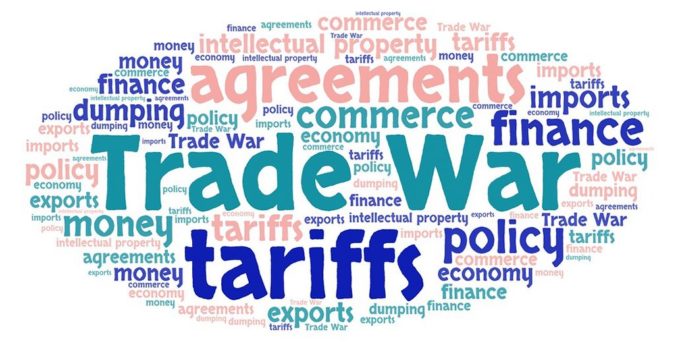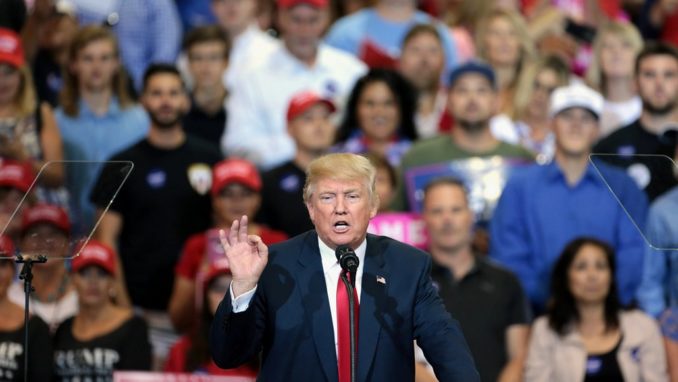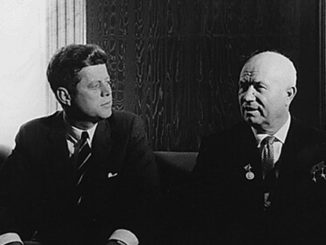
It’s been interesting (but entirely predictable) to see the world reaction to Trump’s tariff speech. I suppose that hysteria is warranted, because what Trump has done is indeed unprecedented and likely to have seismic effects, intended and unintended. And these effects will be global in scope, likely to impact Europe more than anywhere, even more than the US and perhaps even Chyyyyyna.. Now there is a completely relevant argument to be had against trade protection, and much of the criticism of what Trump has done adopts the economist’s conventional framing. But it should be blindingly obvious that the administration’s policy is based on a totally different vision. A vision that finds the conventional approach far too blinkered and narrow-minded. And it has a point.
Therefore, the question is: which vision is correct? The conventional wisdom, or Trump’s heretical alternative ? Criticism has focused on the issue of the “reciprocity” of the tariffs, and specifically the formula that the administration used to calculate tariff rates by country. The critics say that the tariffs the formula generates are far larger than the tariffs that the target countries impose on US goods, so that Trump’s claim of reciprocity is a lie. Viewed narrowly, these criticisms are correct. But in his speech, and elsewhere, Trump alluded to a nexus of non-tariff policies that are either nakedly or implicitly protectionist to justify the rates he is demanding. These policies include “currency manipulation,” among other things.
In essence, what the administration is doing is using bilateral trade deficits as a proxy to measure the total impact on the US of this nexus of policies (going beyond tariffs) of each trading partner. Yes, this is obviously a very crude proxy. Bilateral deficits are driven by many factors other than asymmetric protectionist measures, such as comparative advantage, but such measures do also matter. The formula thus results in false positives – charging tariffs that are based on trade deficits driven by non-protectionist factors. But it is clearly focused on avoiding false negatives– i.e., not punishing those whose surpluses with the US are driven by the nexus of protectionist policies.
Put simply, the tariffs are a bludgeon, and if the skulls of some innocents are smashed, Trump gives absolutely no Fs as long as the skulls of the targets (How you doin’ Chyyyna ?) are well and truly pulverised. Given the parameters used in it, & specifically the elasticity of US import demand with respect to prices, and the fraction of tariffs passed through, the formula spits out a tariff level for each country that would cut the trade deficit in half. There’s naturally a lot of snarking about these two parameters (its a rule of thumb that any large calculations made by economists will be incorrect) but it’s likely that they were chosen largely to achieve this objective. If I may, there are two observations that are well outside the conventional framing dominating the criticism.
First, I do have doubts that tariffs, even as punitive as those being implemented, will affect the overall US trade balance. In a one period world, there are no trade deficits: the value of imports must equal the value of exports. However, with multiple periods and capital markets, trade deficits can exist, and they are the mirror of capital flows. In essence, foreigners are willing to sell a greater value of goods to the US than the value of goods they receive in return only under the expectation that they will receive a greater value of goods on net in the future, and where the net is zero in present value terms. The US thus pays for the surplus of goods imported today with IOUs. One implication of this is that trade deficits are largely driven by US budget deficits. The deficits generate IOUs, much of which are taken up by foreigners in exchange for the goods they sell to the US today. Meaning that the efforts of DOGE will be more material in reducing trade deficits than the tariffs will be.
Second, the conventional framing implicitly assumes we are in a “first best” world. That is, economies are currently efficient, and operating with no distortions. LaLaLand, in other words. Introducing a distortion like tariffs into Eden creates a fallen world. But, of course, we are decidedly not in a first best world. Indeed, the entire rationale for the tariffs is that we are in a very, very fallen world in which foreign nations – (You OK Chyyyna ?) – implement a vast complex of distortionary policies. With respect to Chyyyna these include, amongst others, capital controls, currency management, financial repression (thats a biggie), restrictions on foreign investment, widespread subsides (shipbuilding especially) and a plethora of regulatory policies that favor domestic firms over impudent round eyed devils. In such a world, it is categorically incorrect to conclude that an aggressive tariff policy is bad, based on the effects of tariffs in a first best world, which is not the world we are in.
Are Trump’s tariffs what economists call a second best policy? That is, a policy that is welfare improving because it offsets pre-existing distortions? I confess, I really don’t know: the world is very complex, and tracing through all the effects is a daunting task. But what I do know is that this is the question that must be addressed, but which virtually everyone is ignoring. Meaning that the hysteria is utterly pointless, and the current debate is totally off-point. And it will be until the we’re-not-in-the-first-best-
The misdirection of the hysteria is even more pronounced due to a widespread failure to determine whether the tariffs are a tactic, or a strategy based on a conviction that tariffs are good per se. Bearing in mind the past business experience of POTUS – Mr. Art of the Deal – it is highly likely that the tariff bomb is a tactic, and specifically a negotiating tactic in which DJT exchanges concessions on the punitive rates for foreign reductions in their protectionist measures. If that’s the case, and the tactic works, ironically the end state would be closer to the classical liberal economic outcome that the critics assert Trump is destroying. That is, when all is said and done there will be less protectionism in all forms, tariff and non-tariff. The imposition of tariffs on pretty much everyone has important implications for the negotiation game.

One implication is that this is a divide and conquer strategy. Although the rest of the world’s collective interest would be to cooperate to counter the US strategy, collective action problems abound. Indeed, there is a prisoner’s dilemma in play here. Countries realize that they can get a better deal if they bend the knee early. Hence the rapid actions by Vietnam, Cambodia, and Israel. They may be the first, but no doubt not the last. Indeed, there is likely an unraveling dynamic here: who really wants to be the last to genuflect?. Or consider Europe…….now confronted by the ugly reality that US tariffs on China will result in a redirection of goods to Europe that will hit European industries hard. So Europe may be sorely tempted to raise unilaterally its tariffs on Chinese goods – which would suit Trump just fine, since the tariff policy, and as is the case with almost all other Trump foreign policies, is all about China, China, China, and specifically weakening China. And even if Europe doesn’t unilaterally respond to a surge in Chinese goods by raising protective barriers, it may well agree to do so as part of a deal with Trump to reduce the tariffs they pay in the US. (Even though European consumers would benefit from this influx of Chinese goods, the political economy of protectionism favors producers (concentrated interests) over consumers (a diffuse interest).
The confusion over whether this is actually a negotiating tactic, or whether Trump is in fact a true believer that tariffs are great policy is actually necessary for it to be an effective negotiating tactic. Game theory long ago demonstrated that a reputation for doing seemingly irrational things requires that there be a positive probability that someone is in fact irrational. So the uncertainty over whether Trump is truly crazy is a necessary condition for him to implement a crazy-like-a-fox negotiating strategy. Even if he is really just bluffing, he has to credibly signal that he’s not, and he does that by proclaiming his love for beautiful beautiful tariffs.
In sum, the cramped vision of those melting down and freaking out over Trump’s manoeuvres precludes a serious analysis of it. Econ 101 says – tariffs are bad economic drugs. Yup – in an otherwise first best world. But since we are clearly not in that world, and that Trump has identified ways in which the world is fallen, it is not necessarily the case that the extraordinary measures that he has put forward are bad. Especially if he is using them to extract concessions that eliminate or at least mitigate the policies that currently distort world trade, production, and consumption.
So, one cannot conclude that the tariff bomb is destructive, based on Econ 101. One must grapple with the much more daunting challenge of evaluating its effect in a decidedly fallen world. Alas, there seems to be little ability or inclination to do so. Instead we are be bombarded by the legacy media with a continual stream of hysterical rants rooted in textbooks not reality, amplified of course by the pre-existing hatred of all things Trump among the self styled ‘leets.
© DJM 2025



